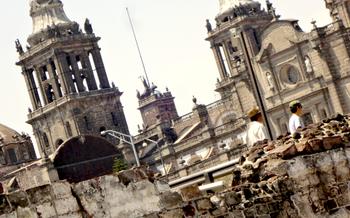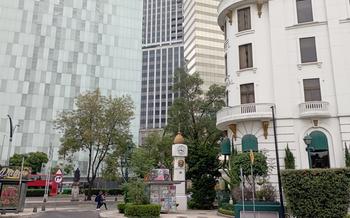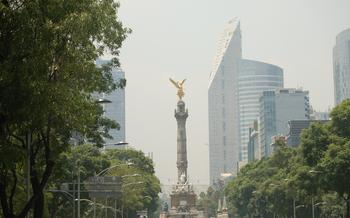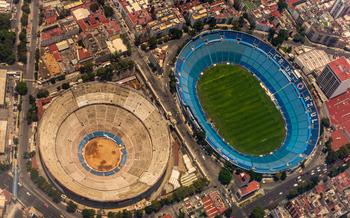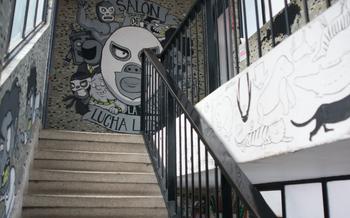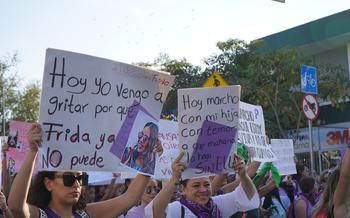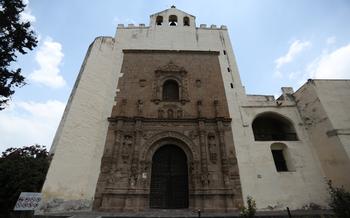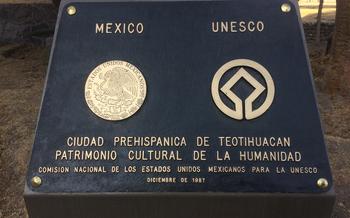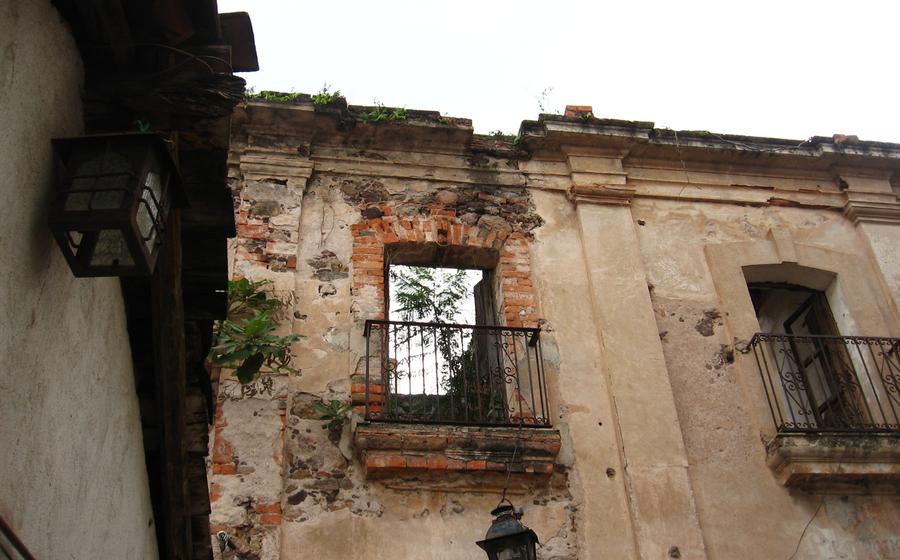
La Maestranza Bullring
- La Maestranza Bullring: A Legacy of Tradition
- The Fighters: Matadors and Bulls
- Dress to Impress: Bullfight Attire
- Inside the Ring: A Sensory Experience
- Bullfighting and Social Class in Mexico
- Female Matadors: Breaking Barriers and Challenging Norms
- Behind the Scenes: The Bullfight Industry
- Bullfighting Festivals and Events in Mexico
- Bullfighting Museums and Exhibitions
- Bullfighting Literature and Cinema
- Alternative Perspectives: Animal Welfare and Anti-Bullfighting Movements
- The Future of Bullfighting in Mexico: Challenges and Opportunities
- Insider Tip: Experience the Thrill from the Front Row
La Maestranza Bullring: A Legacy of Tradition
In the heart of Taxco, Mexico, stands La Maestranza Bullring, a majestic testament to the country's rich and controversial bullfighting heritage. Since its inauguration in 1946, this iconic arena has served as a stage for countless corridas de toros, captivating audiences with its thrilling spectacles and showcasing the artistry of legendary matadors. Bullfighting, deeply ingrained in Mexican culture, is an art form that blends tradition, skill, and spectacle, leaving an indelible mark on the nation's identity.
The architectural grandeur of La Maestranza Bullring reflects the significance of bullfighting in Mexico. Constructed in a neo-colonial style, the arena features a circular design with tiers of stone seats rising steeply from the central ring. The intricate stonework, elegant arches, and vibrant colors create a visually stunning backdrop for the dramatic events that unfold within its walls.
Beyond its architectural beauty, La Maestranza Bullring holds immense cultural significance. It is a symbol of Mexican heritage, representing a tradition that has been passed down through generations. The bullring serves as a gathering place for communities, fostering a sense of unity and shared identity. However, the practice of bullfighting remains a polarizing issue, with ongoing debates about animal cruelty and ethical concerns, making La Maestranza Bullring a nexus of controversy and intrigue.
The Fighters: Matadors and Bulls
The world of bullfighting revolves around two key players: the matadors and the bulls. Matadors, also known as toreros, are the skilled individuals who face the bulls in the ring. Becoming a matador requires years of dedication, training, and mastery of various skills. They undergo rigorous physical and technical training to develop the agility, strength, and coordination necessary to navigate the dangerous encounters with the bulls.
On the other hand, the bulls used in corridas are specially bred for their strength, agility, and temperament. They are typically large, powerful animals, often weighing over 500 kilograms. The bulls are raised in ranches and undergo a selection process to identify those with the desired characteristics for bullfighting.
Rituals and traditions surround both the matadors and the bulls. Matadors follow a strict code of conduct and adhere to specific rituals before and during the bullfight. These rituals include dressing in the traditional traje de luces, performing the paseíllo (procession) around the ring, and dedicating the bull to a special person or cause.
The bulls also have their own rituals and traditions associated with them. They are often adorned with colorful ribbons and bells, and their horns are sometimes tipped to reduce the risk of injury to the matador. The bulls are also carefully inspected before the fight to ensure they meet the required standards of health and temperament.
Ethical debates regarding the treatment of animals are an integral part of the discussion surrounding bullfighting. Animal rights activists and organizations have raised concerns about the suffering and death of the bulls during the corrida. These debates have led to discussions about the ethics of bullfighting, the treatment of animals in the industry, and the cultural significance of the tradition.
Dress to Impress: Bullfight Attire
In the realm of bullfighting, attire holds immense cultural significance, embodying both tradition and spectacle. The matador's costume, known as the traje de luces, is a mesmerizing display of artistry and symbolism. This elaborate suit, adorned with intricate embroidery and shimmering sequins, transforms the matador into a captivating figure in the bullring.
The origins of the traje de luces can be traced back to the 18th century, when bullfighters sought to distinguish themselves from the common folk. Over time, the costume evolved into an iconic symbol of bravery and elegance, reflecting the matador's status as a revered figure in Mexican society.
The traje de luces typically consists of a fitted jacket, adorned with rows of decorative buttons, and matching pants. The jacket is often made of rich fabrics such as silk or velvet, while the pants are traditionally made of tight-fitting white linen. The most striking feature of the costume is the intricate embroidery, which often depicts religious or mythological scenes, symbolizing the matador's connection to a higher power.
The colors of the traje de luces are also significant. Traditionally, matadors wore suits in bright, vibrant colors such as red, gold, or green, which were believed to distract the bull and add to the spectacle of the fight. However, in recent years, matadors have begun to experiment with more subdued colors, such as black or navy blue, reflecting a shift towards a more contemporary aesthetic.
Beyond its visual appeal, the traje de luces serves several practical purposes. The tight-fitting design allows for freedom of movement, while the padding on the shoulders and chest provides protection from the bull's horns. The high collar and wide brimmed hat also shield the matador's face and neck from the sun and the bull's horns.
The traje de luces is not merely a costume; it is an integral part of the bullfighting tradition, representing the matador's dedication to his craft and his status as a symbol of courage and artistry.
Inside the Ring: A Sensory Experience
A bullfight is a spectacle that captivates the senses and evokes a range of emotions. The atmosphere is electric, with the crowd buzzing with anticipation and excitement. The air is filled with the sounds of trumpets, drums, and the roar of the crowd. The colors are vibrant, with the matador's traje de luces standing out against the backdrop of the bullring.
The thrill of the corrida is palpable. The audience is on the edge of their seats, their hearts racing as they witness the unfolding drama. The suspense builds with each pass of the matador, as he skillfully maneuvers the bull, demonstrating his courage, technique, and artistry. The crowd erupts in cheers and applause when the matador successfully lands a strike, and the bull falters.
Bullfighting is a cultural spectacle that engages all the senses. It is a feast for the eyes, ears, and emotions. The spectacle of the corrida, with its vibrant colors, dramatic movements, and emotional intensity, is a testament to the enduring power of this traditional art form.
Bullfighting and Social Class in Mexico
Bullfighting has long been associated with the upper classes in Mexico. Historically, attending bullfights was a privilege reserved for the wealthy and elite, who viewed it as a sophisticated and cultured form of entertainment. The bullring was a place where the aristocracy could socialize, display their wealth, and assert their social status.
However, in contemporary Mexico, attitudes towards bullfighting have undergone significant changes. The rise of the middle class and the increasing influence of animal rights movements have challenged the traditional associations between bullfighting and social class. Today, bullfights attract a more diverse audience, with people from all socioeconomic backgrounds attending these events.
The changing demographics of bullfighting audiences reflect the evolving social landscape of Mexico. As the country becomes more egalitarian and class distinctions become less pronounced, bullfighting is no longer seen exclusively as an upper-class pastime. Instead, it has become a more inclusive form of entertainment, accessible to people from all walks of life.
Despite these changes, bullfighting still retains some of its elitist associations. The cost of attending a bullfight can be prohibitive for many working-class Mexicans, and the sport continues to be associated with wealth and privilege in some circles. Nevertheless, the increasing popularity of bullfighting among the middle class and lower classes suggests that the sport is gradually shedding its elitist image and becoming more representative of Mexican society as a whole.
Female Matadors: Breaking Barriers and Challenging Norms
Throughout history, bullfighting has been a predominantly male domain, with women facing significant barriers to entry. However, a few courageous and determined women have defied societal norms and achieved remarkable success in the bullring.
One of the pioneers of female bullfighting was Conchita Cintrón, who made her debut in 1934 and became a symbol of women's empowerment in Mexico. Despite facing prejudice and opposition, she persisted and became a respected and successful matador, inspiring a generation of women to follow in her footsteps.
In recent years, women have made significant strides in bullfighting, with several notable female matadors gaining recognition for their skill and bravery. Cristina Sánchez, Mari Paz Vega, and Raquel Martínez are among the contemporary female matadors who have achieved great success, competing alongside their male counterparts and earning the respect of aficionados.
However, the path for female matadors remains challenging, as they must navigate a male-dominated industry and often face discrimination and skepticism. Despite these obstacles, they continue to break down barriers and prove that women can excel in this traditionally male-dominated sport.
The presence of female matadors is not only a testament to their individual achievements but also a symbol of progress and gender equality in Mexico. Their success challenges traditional notions of masculinity and femininity and contributes to a more inclusive and diverse society.
Behind the Scenes: The Bullfight Industry
Bullfighting in Mexico is not just a spectacle; it is a multi-million dollar industry that employs thousands of people and generates substantial revenue. The organization of a bullfight involves a complex network of stakeholders, including bull breeders, matadors, bullfighting schools, bullring owners, and event organizers.
Bull breeders play a crucial role in the industry by raising and training the fighting bulls. These specialized breeds, such as the Spanish Fighting Bull, are carefully selected and bred for their strength, agility, and temperament. The bulls undergo rigorous training to prepare them for the ring, including exposure to sounds, movements, and objects that simulate the bullfight environment.
Matadors, the star performers of the bullfight, are highly skilled athletes who undergo years of rigorous training and apprenticeship. They learn the art of bullfighting from experienced matadors and hone their skills through practice and performances in smaller bullrings before advancing to major arenas.
Bullfighting schools, known as escuelas taurinas, provide formal training for aspiring matadors. These schools offer comprehensive programs that cover the technical, physical, and artistic aspects of bullfighting. Students learn about the history, traditions, and techniques of the sport, as well as the handling of the cape, sword, and banderillas.
Bullring owners and event organizers play a vital role in coordinating and managing bullfights. They are responsible for booking matadors, selecting bulls, promoting the events, and ensuring the safety and security of the bullring. The bullring itself is a significant investment, with costs ranging from construction and maintenance to operational expenses.
The bullfight industry also generates significant revenue through ticket sales, concessions, and sponsorships. Bullfights often attract large crowds, and tickets can range from affordable to premium prices depending on the popularity of the matadors and the prestige of the event. Concessions, such as food, beverages, and souvenirs, also contribute to the revenue stream.
Overall, the bullfight industry in Mexico is a complex and multifaceted business that involves a wide range of stakeholders and generates substantial economic activity.
Bullfighting Festivals and Events in Mexico
Bullfighting in Mexico is not just a sport; it is a cultural spectacle celebrated through various festivals and events that showcase the country's rich taurine traditions. The most prominent of these events is the Feria de San Marcos held annually in Aguascalientes, Aguascalientes. This month-long festival, which takes place in April and May, is renowned for its grand bullfights, attracting matadors and aficionados from around the world.
Another significant bullfighting event is the Feria de San Isidro in Madrid, Spain, which is considered one of the world's most prestigious bullfighting festivals. Held annually in May and June, the festival features a series of bullfights, cultural events, and exhibitions, attracting thousands of visitors each year.
In Mexico City, the Plaza de Toros México hosts regular bullfights, including the prestigious Corrida Guadalupana held in December, which attracts top matadors and a large audience. Other notable bullfighting festivals in Mexico include the Feria Nacional de Zacatecas, the Feria de León, and the Feria de Tlaxcala.
These festivals not only showcase the artistry and skill of matadors but also serve as a platform to promote Mexican culture and heritage. The vibrant atmosphere, colorful costumes, and traditional music create a unique and immersive experience for visitors, offering a glimpse into the deep-rooted traditions of bullfighting in Mexico.
Bullfighting Museums and Exhibitions
Mexico takes pride in preserving its bullfighting heritage through dedicated museums and exhibitions. These institutions offer a fascinating glimpse into the world of corridas, showcasing historical artifacts, costumes, and memorabilia that tell the story of this iconic tradition. Interactive exhibits and educational programs provide visitors with an immersive experience, allowing them to learn about the techniques, history, and cultural significance of bullfighting.
One prominent museum is the Museo Taurino in Mexico City, which houses an impressive collection of bullfighting artifacts, including trajes de luces, swords, capes, and bull heads. Visitors can trace the evolution of bullfighting in Mexico through historical documents, photographs, and paintings. The museum also hosts temporary exhibitions and events, offering a dynamic platform for exploring the various aspects of bullfighting culture.
Another notable institution is the Museo del Toro in Querétaro, which focuses on the history and breeding of fighting bulls. Visitors can learn about the different breeds, their characteristics, and the process of selecting and raising bulls for bullfighting. The museum also showcases bullfighting equipment, posters, and sculptures, providing a comprehensive overview of this unique aspect of Mexican culture.
By visiting these museums and exhibitions, visitors can gain a deeper understanding of the artistry, history, and cultural significance of bullfighting in Mexico. These institutions play a vital role in preserving and showcasing the heritage of this controversial yet deeply ingrained tradition.
Bullfighting Literature and Cinema
Bullfighting has served as a compelling source of inspiration for literary and cinematic works, capturing the essence of this controversial tradition. Renowned authors, such as Ernest Hemingway and Vicente Blasco Ibáñez, have explored the world of bullfighting in their novels, delving into the lives of matadors, the intricacies of the sport, and the cultural significance of this spectacle.
On the silver screen, bullfighting has been immortalized in classic films like "Blood and Sand" (1941), "The Brave Bulls" (1951), and "Viva Zapata!" (1952). These cinematic masterpieces have brought the drama and spectacle of bullfighting to a global audience, showcasing the skill, bravery, and artistry of the matadors.
Through literature and cinema, bullfighting has been immortalized as a cultural phenomenon, providing insights into the history, traditions, and controversies surrounding this divisive practice. These artistic representations have played a crucial role in shaping perceptions and attitudes towards bullfighting, offering a unique perspective on this complex and captivating aspect of Mexican culture.
Alternative Perspectives: Animal Welfare and Anti-Bullfighting Movements
Bullfighting, with its inherent violence and animal cruelty, has long been a subject of ethical debate. Animal welfare organizations, such as AnimaNaturalis and the Humane Society International, have actively campaigned against bullfighting, citing the unnecessary suffering and death of the bulls. They have organized protests, lobbied for legislation, and raised awareness about the issue.
Anti-bullfighting movements have gained significant traction in recent years, particularly among younger generations who are more sensitive to animal rights. Public opinion in Mexico is shifting, with growing numbers of people expressing opposition to bullfighting. Several Mexican states and municipalities have banned the practice, and there is ongoing pressure to end it nationwide.
The debate over bullfighting often pits cultural heritage against animal welfare. Supporters of bullfighting argue that it is a deeply rooted tradition that forms an integral part of Mexican culture and identity. They emphasize the skills and artistry of the matadors and the spectacle of the event. However, animal rights advocates counter that tradition should not justify cruelty, and that there are more humane ways to celebrate Mexican culture.
The future of bullfighting in Mexico remains uncertain. Legal challenges, changing social attitudes, and animal welfare concerns pose significant threats to its continued existence. However, the deep-seated cultural significance of bullfighting may ensure its survival in some form, albeit with potential modifications to address animal welfare issues.
The Future of Bullfighting in Mexico: Challenges and Opportunities
The future of bullfighting in Mexico is uncertain, facing both challenges and opportunities. The legal status of bullfighting is a contentious issue, with ongoing legal battles and debates surrounding its legality. Changing social attitudes and the rise of animal rights movements have led to growing opposition to bullfighting, particularly among younger generations.
Animal welfare concerns remain a significant challenge, with critics arguing that bullfighting is inherently cruel and barbaric. Efforts to modernize bullfighting and address animal welfare concerns are underway, such as the use of non-lethal bullfights or the prohibition of certain practices that cause unnecessary suffering to the bulls.
Despite the challenges, bullfighting remains a deeply rooted cultural tradition in Mexico, with a significant economic impact and a loyal fan base. It is seen as an important part of Mexican heritage and identity, and efforts are being made to promote responsible and sustainable bullfighting practices.
The future of bullfighting in Mexico will depend on the ability to balance the cultural significance of the tradition with the ethical concerns and changing societal attitudes. Whether bullfighting can adapt and evolve in a way that addresses animal welfare concerns and appeals to a broader audience remains to be seen.
Insider Tip: Experience the Thrill from the Front Row
Attending a bullfight is an immersive experience that transports you to the heart of Mexican culture. To fully embrace the spectacle, consider securing a seat in the front row. This vantage point offers an unparalleled view of the action, allowing you to witness the intricate footwork, graceful passes, and daring maneuvers of the matador up close.
Securing front-row seats requires careful planning. Tickets for these premium spots tend to sell out quickly, so it's advisable to book in advance. Look for designated sections labeled as "barrera" or "contrabarrera," which offer the closest proximity to the ring.
When choosing your seat, consider your personal preferences and budget. Seats closer to the center provide a more comprehensive view of the bullring, while those on the shady side offer respite from the sun's intensity. Prices vary depending on the location and the prestige of the bullfight.
Attending a bullfight comes with certain etiquette and safety guidelines. Dress appropriately, respecting the formal nature of the event. Avoid wearing shorts, tank tops, or excessively casual attire. If you're unsure about the dress code, err on the side of caution and opt for smart casual attire.
Once inside the bullring, follow the instructions of the ushers and take your seat promptly. Remain seated throughout the performance, except during the intervals between the bulls. Refrain from talking or making excessive noise during the bullfight, as it can be disruptive to the matadors and the audience.
For a truly immersive experience, embrace the spectacle with an open mind and a willingness to learn. Observe the intricate techniques and artistry of the matadors, and appreciate the bravery and skill required to face a charging bull. Remember to be respectful of the traditions and customs surrounding bullfighting, even if they differ from your own cultural norms.

